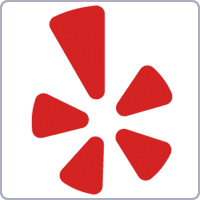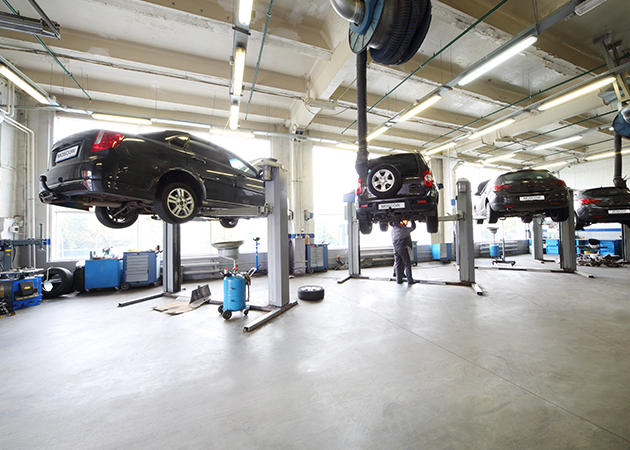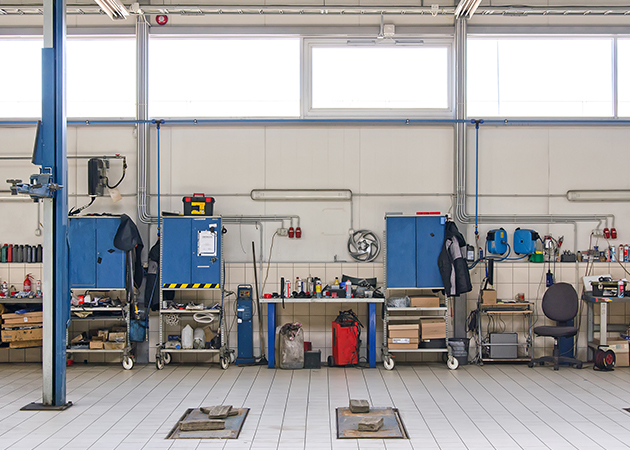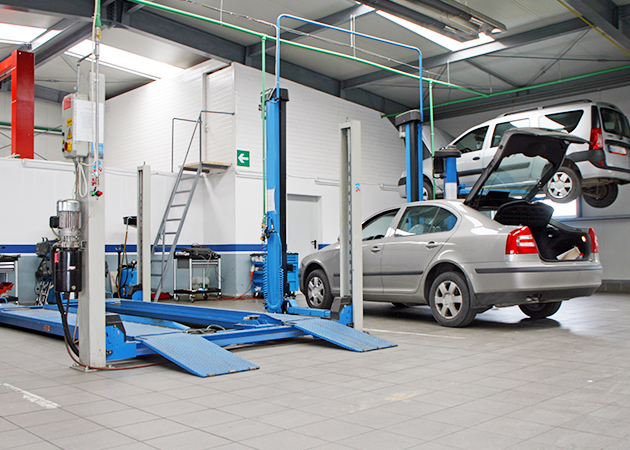- Hollingsworth Auto Clinic
![[ Shop Logo ]](/images/shops/8317/8317logo.jpg)
Tips and Tricks
-
Accident
You should keep the following in your glove compartment just in case of an accident
- Name of insurance company
- Your policy number
- Your agent's phone number
- Name and number of a local Tow Company
Print out our accident checklist and keep it in your car. It will give you all the steps you need to go through after the accident has occurred. This will help you and your insurance agent tremendously in resolving potential issues.
Notify your insurance agent as soon as possible. Give them all the information you gathered at the scene and make arrangements for repair.
-
General
Leave a piece of felt in your car to defrost windows. You can clean the frost off with the felt. It works immediately and effectively until your defroster catches up.
When replacing a battery, put a small layer of baking soda in the battery box or mount. The powder acts as a cushion, and absorbs any acids that leak from the battery. This helps prevent acid from eating through the battery box and damaging the body of the car.
Indications that you may need a tune up include: poor starting, engine knocking, engine stalling, loss of power, poor gas mileage, strange odors, or rough running. Schedule an appointment online with our shop to get your car running smoothly again.
-
Tires
Increase tire life by making sure your wheels are in alignment. Wheels will go out of alignment under normal driving conditions, but this will be accelerated by excessively running into bumps and curbs. If you are experiencing uneven tire wear, go to our shop equipped to handle alignment problems and have your alignment adjusted.
Each tire wears differently because of its position on the car. For even wear on all tires, they must be "rotated" or their positions must be swapped regularly. Rule of thumb: you should rotate your tires every other oil change or approximately every 5,000-8,000 miles.
When tightening the lug nuts of a wheel, make sure to always use a star pattern. This ensures that the wheel is tightly secured and flush against its mount. In a 5 nut wheel, tighten one nut, skip one, tighten the next nut, skip another, and so on until all are tight. On a 4 nut wheel, tighten them in opposing pairs.
For best performance and longest life, keep your tires properly inflated based on the manufacturers specifications (32 psi on average). Overinflation causes excessive wear down the center of the treads while underinflation causes excessive wear at the edges. You can usually find the proper inflation level on the inside of the driver's side door of your car.
-
Do It Yourself
Always remove jewelry like rings, watches, and necklaces so they don't catch on obstructions.
Don't wear loose clothing or wear your hair long while working on a car. Not only will it get dirty, it could get caught on moving parts.
Work outdoors if you need to have your car running. Exhaust gases can be lethal if you are working inside your closed garage.
Don't smoke while working on your car. There are many flammable substances that could ignite.
Don't open the cap on the radiator when it's hot (right after the car has been running for a while). The hot fluid inside is under tremendous pressure and can shoot out and burn you.
Use a jack stand or drive up ramps to support your car if you need to go underneath it. Factory jacks are only for changing tires.
Most fluids around a car are toxic. Keep kids and pets away while working to avoid accidental poisoning.
Electric cooling fans mounted on the radiator can turn on and off at any time. (There's actually a thermostat switch that controls the fan). Avoid the fan when working or disconnect the fan motor from the power source.
-
Overheating
To cool down an engine on the verge of overheating, turn OFF the air conditioner and turn ON the heater full blast. This will help dissipate the heat from the engine. Stop the car if this doesn't cool down the engine. This is not a permanent fix. Visit our shop and have the problem permanently fixed.
Avoid overheating by releasing load on your engine. If you are climbing a long hill, turn off the air conditioner or shift into a lower gear. This will allow you to get over the hill without additionally straining your engine.
-
Traction
If the car moves even slightly, avoid applying too much power which can spin the tires in place. Spinning wheels offer less traction. Patiently move the car out of the area and back onto more solid ground.
If the wheels spin and the car is not moving, try "rocking" the car. Slowly give the car power to the point that the tires begin to spin then immediately release power. You will notice that the car slightly rocked forward then back. Do this repeatedly as you try to gain momentum in each rocking cycle. Just like a child pushing a swing, you synchronize the push (or gas) so that the rocking motion is increased. With a bit of timing and luck, you could rock just enough to regain traction. (In cars with automatic transmission, rocking requires shifting back and forth between forward and reverse. In a manual, simply engage and disengage the clutch while stepping on the gas).
If your car is stuck with one wheel spinning while the other is not, try this trick: Engage the parking brakes two or three clicks. Step on the gas slowly to get the car moving. As soon as the car starts to move, release the parking brake completely. Because spinning wheels don't have traction, what you are doing by engaging the parking brake is allowing a clutch in the differentials to energize allowing the car to adjust for increased traction. -
Efficiency
On long drives, use the cruise control to save gas. The gradual acceleration and deceleration improves your fuel efficiency.
Putting luggage and other items on top of your vehicle creates drag. To reduce these effects, put the luggage/items inside of a roof top container or wrap them in a tarp secured by rope. This not only causes less drag, but also protects your items from weather.
Warming up your car in the morning is an old myth. As long as you are not putting the car under excessive loads right away, driving your car under normal conditions will naturally bring the car to optimum operating temperature. Idle warm-up periods waste fuel and add to air pollution.
Keep your tires properly inflated to keep your gas mileage high. Driving with low tire pressure is like riding a bike with a flat. Besides wearing down your tires, it simply wastes energy. Proper inflation levels are determined by the manufacturer, but it's about 32 psi.
-
Pedals
Don't "ride the clutch" by keeping your foot on the clutch pedal. This causes excessive friction and accelerated wear.
To keep your clutch a little longer, follow these simple do's and don'ts: 1) Do pause for a second or two between gears, this allows better transmission synchronization 2) Don't use the clutch to hold a position on a hill, use the brakes 3) Don't rev the engine excessively before releasing the clutch. 4) Release your clutch smoothly when accelerating from a stop.
-
Winter
Go to our shop and change your motor oil to a viscosity appropriate for your local temperatures. The lower viscosity oils (noted on the container by number i.e. 5W-30) flow better and will therefore offer more protection in lower temperatures.
Go to our shop to have your cooling system drained and flushed. Refill the system with a fresh mixture of 50:50 antifreeze and water. The antifreeze will keep the fluids from freezing up and thereby protect your engine and its moving parts in cold weather conditions.
Go to our shop and ask for a safety inspection that includes belts, hoses, fluids, tires, lights, and battery check. Replacing these low cost parts before they are needed can often save you a much higher cost of inconvenience and repair in the event of a breakdown.
Go to our shop and have your windshield wiper blades replaced and wiper fluid reservoir filled. These low cost items can drastically improve your vision in winter conditions and thereby prevent accidents. Wiper blades should be replaced every 6 months because the rubber hardens over time and becomes ineffective.
In areas exposed to freezing temperatures, spray door locks with lubricant to prevent freezeups. You don't want to be stuck on a freezing winter night not being able to unlock your door.
Things to have on hand especially in the winter months include 1) Jumper cables 2) Windshield Scrapers 3) Flashlight w/ batteries 4) Emergency Flares 5) Traction aids (i.e. chains, sand, gravel).
Don't try to force turn a frozen lock, you can break the key off inside it. Instead, try one of these tricks: 1) Use another door 2) Use a cigarette lighter or match to heat up your key before inserting it into the lock 3) Spray commercial deicer into the key opening 4) Use a hair dryer to shoot warm heat at the lock.
-
Engine
Your timing belt coordinates various functions in your engine. If it breaks, your engine stops. You should prevent this by changing your timing belt at 60,000-90,000 service intervals. Depending on your manufacturer's specifications, you may even need to change it sooner. If your car has a timing chain, the breakage could cause engine damage. Have one of our shop mechanics check to see if your timing belt or chain needs replacement.
-
Smells
If your ventilation system is causing a musty odor, you might try this trick: Turn the heater on full blast for a few minutes with the engine running. Then shut the car off and spray water from a garden hose into the air intake vents (the vents on the outside of the car at the base of the windshield) to wash away the buildup.
-
Fluids
Dispose of used motor oil at local auto service facilities or at some retail car part stores. Never pour it down a drain, put it in the garbage, or put it in your home's heating oil tank. One quart of oil can contaminate 2 million gallons of water. It's your responsibility not to poison the water supply.
It's often difficult to pour oil into the engine without spills. You can use an unwaxed paper cup as a funnel by poking a hole at the bottom and pouring the oil into the large opening of the cup.
If the oil light comes on, stop the car immediately. The loss of oil pressure can be caused by lack of oil or the failure of the oil pump. Running a car without oil pressure can destroy the engine within minutes.
Brake fluid is the most often overlooked safety item in a car. It can accumulate moisture which contaminates the fluid and deteriorates the components. Have our shop flush your brake fluid every 2 years or 30,000 miles.
-
Starting
If you had run out of gas before adding new gas, your car may need a little help in getting started. If you have a fuel injection system, turn the key on then off a few times without actually starting the car. This will pressurize the fuel system and assist in starting the car. If you have an old carburetor system, give the gas pedal a couple of pumps before turning the key.
Jump starting a car can get you out of tough situations, but it can also be quite dangerous. Follow precautions before doing so: 1) Don't smoke - batteries produce gases that are explosive. 2) Remove loose clothing, jewelry, watches, and necklaces as they might get caught in moving parts. 3) Do NOT attach the negative jumper cable to the negative post on the dead battery. The sparks given off could ignite the battery gasses and cause an explosion.







